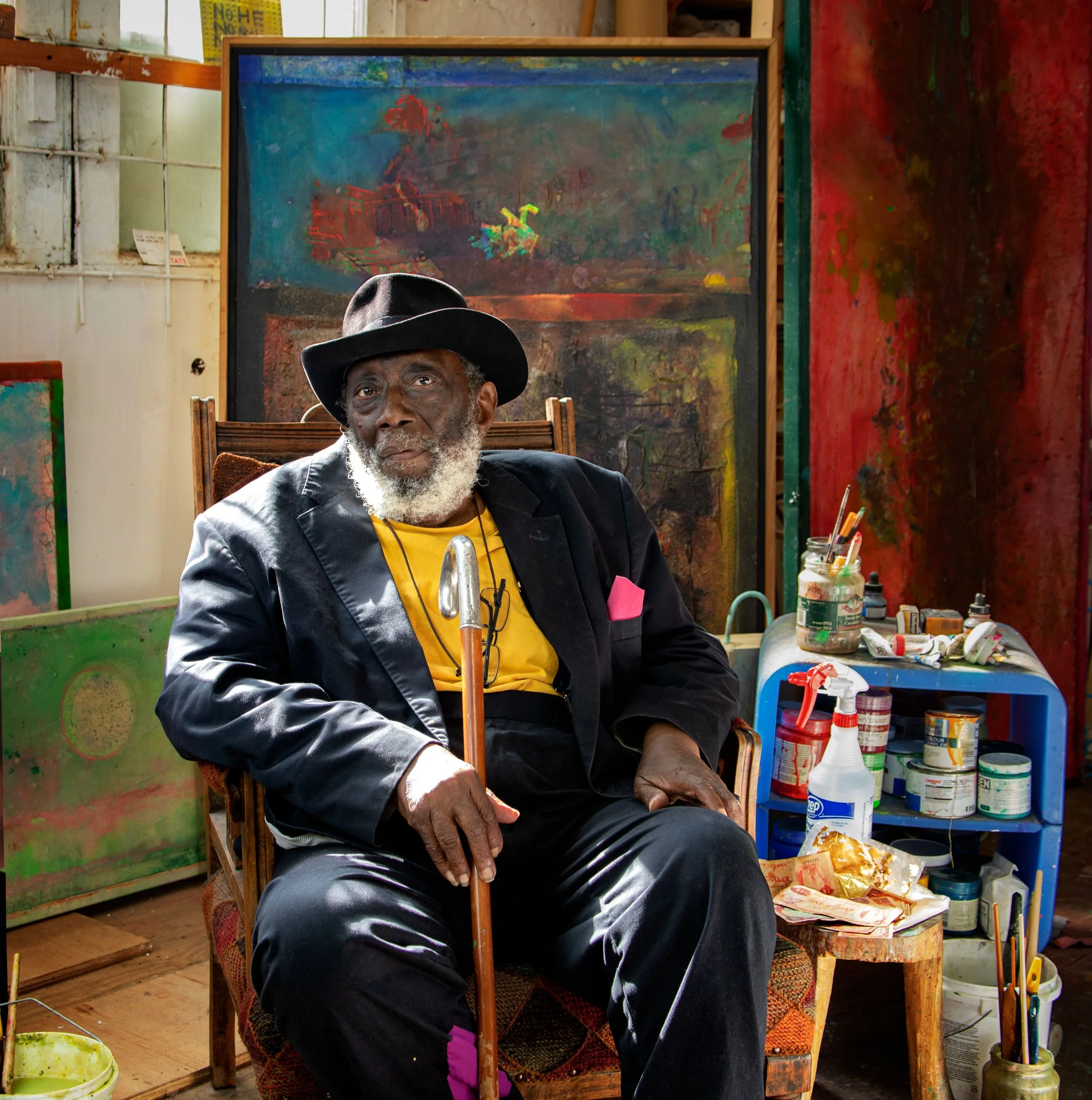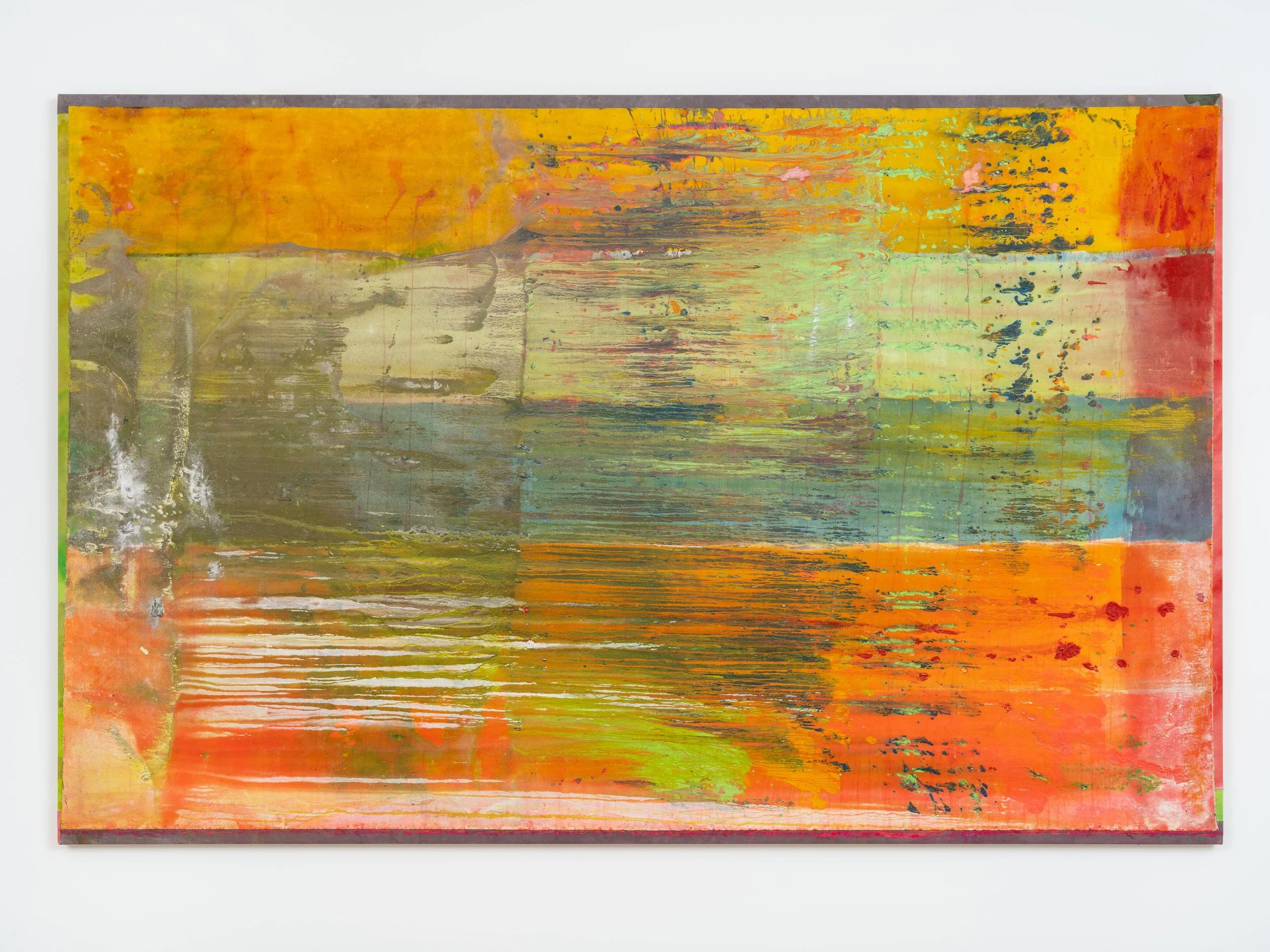Landscape by Frank Bowling
Portrait of Sir Frank Bowling© Frank Bowling. All Rights Reserved, DACS 2023. Courtesy the artist and Hauser & Wirth Photo: Sacha Bowling
One of the foremost British artists of his generation, Sir Frank Bowling, has spent more than six decades relentlessly challenging the limits of the medium of painting and expanding its possibilities, attracting acclaim for his contributions to abstraction. ‘Landscape,’ the artist’s first solo exhibition at Hauser & Wirth West Hollywood, will present 11 recent ebullient paintings that engage the rich art historical tradition of landscape painting – and propel it forward into the present moment.
To accompany the exhibition, Hauser & Wirth Publishers will produce an extensively illustrated catalogue featuring an essay by Dorothy Price, Professor of Modern and Contemporary Art and Critical Race Art History at The Courtauld Institute of Art in London.
#4 to the Lighthouse 2021 Acrylic and acrylic gel on canvas with marouflage 188 x 259.1 cm / 74 x 102 in
‘Landscape’ at Hauser & Wirth West Hollywood coincides with the San Francisco Museum of Modern Art (SFMOMA) exhibition ‘Frank Bowling: The New York Years 1966-1975,’ the first major US survey of the artist’s work in more than four decades. Traveling from the Museum of Fine Arts Boston, the exhibition will be on view from May 20 – 10 September 2023. It will feature 11 additional artworks, including an expanded group of paintings made between 2018 and 2022.
About the Exhibition
Landscape has figured in Bowling’s work since the artist first began making his celebrated Map paintings – vast color fields depicting stenciled images of landmasses like South America or his native Guyana – while living in New York in the 1960s. Over subsequent years, he gradually moved away from cartographic representation to embrace the freedom of abstraction as a means to convey the emotive qualities and properties of color. By the early 1980s, having established a studio near the River Thames in the Pimlico neighborhood of London, Bowling had immersed himself in the purely abstract aspects of traditional painting, specifically the rich history of European painterly engagement with land, sea sky, and clouds found in the work of J.M.W. Turner and John Constable. In response to this influence, the artist developed a highly personal abstract language of his own, in which vivid, dynamic flows of paint allude to landscapes – implicit, metaphorical, metaphysical – alive with distant but distinct sense memories of his birthplace.
Bowling states, ‘I have been fascinated by English landscape painting since my first visit to the National Gallery in London in the 1950s and that tradition is a furrow that I have ploughed for many years. The thing is, I don’t want to make Turners or Constables or Gainsboroughs; I always tried to avoid that. I want to make something completely new, something that no one has seen before.’
Bowling’s lyrical compositions belie the technical prowess and virtuosity by which they are created. Embracing his medium’s inherently aleatory nature, Bowling manipulates the aqueous qualities of paint with the intention of a choreographed performance. ‘I’m fascinated by the movement of paint across the surface of the canvas; when water floods and moves liquid paint, and as it bleeds, drips, splashes and stains, I feel that this captures something of the movement of nature itself,’ he says.
Among the works on view in the exhibition, the monumental canvas ‘#4 to the Lighthouse’ (2021) features broad swathes of paint, some of which have been poured directly onto the canvas and mixed on its plane, rendering an expansive fluorescent field of color imbued with a lambent light. ln ‘Ashton’smix’ (2014), Bowling has harnessed the downward pull of gravity to encourage his medium across the surface of the canvas; the slow drip captured here evokes the passage of time. In other works on view, the canvas ground is covered with paint through combined methods of pouring, throwing, spilling, and trickling. Multi-layered washes, thick impasto textures, acrylic gels, stitching, and metallic and pearlescent pigments all suggest the aftermath of an alchemical process. Built up layer by layer, atmospheric canvases, such as ‘On the way’ (2021), feature sweeping lines that seem to bear traces of landscape: horizon, land, and water. Other works on view, like ‘On The Beach’ (2017) and ‘Skyla’schoice’ (2014), a feature found objects embedded in the surfaces of the paintings, offering glimpses of biographical detail that root them in the present moment.
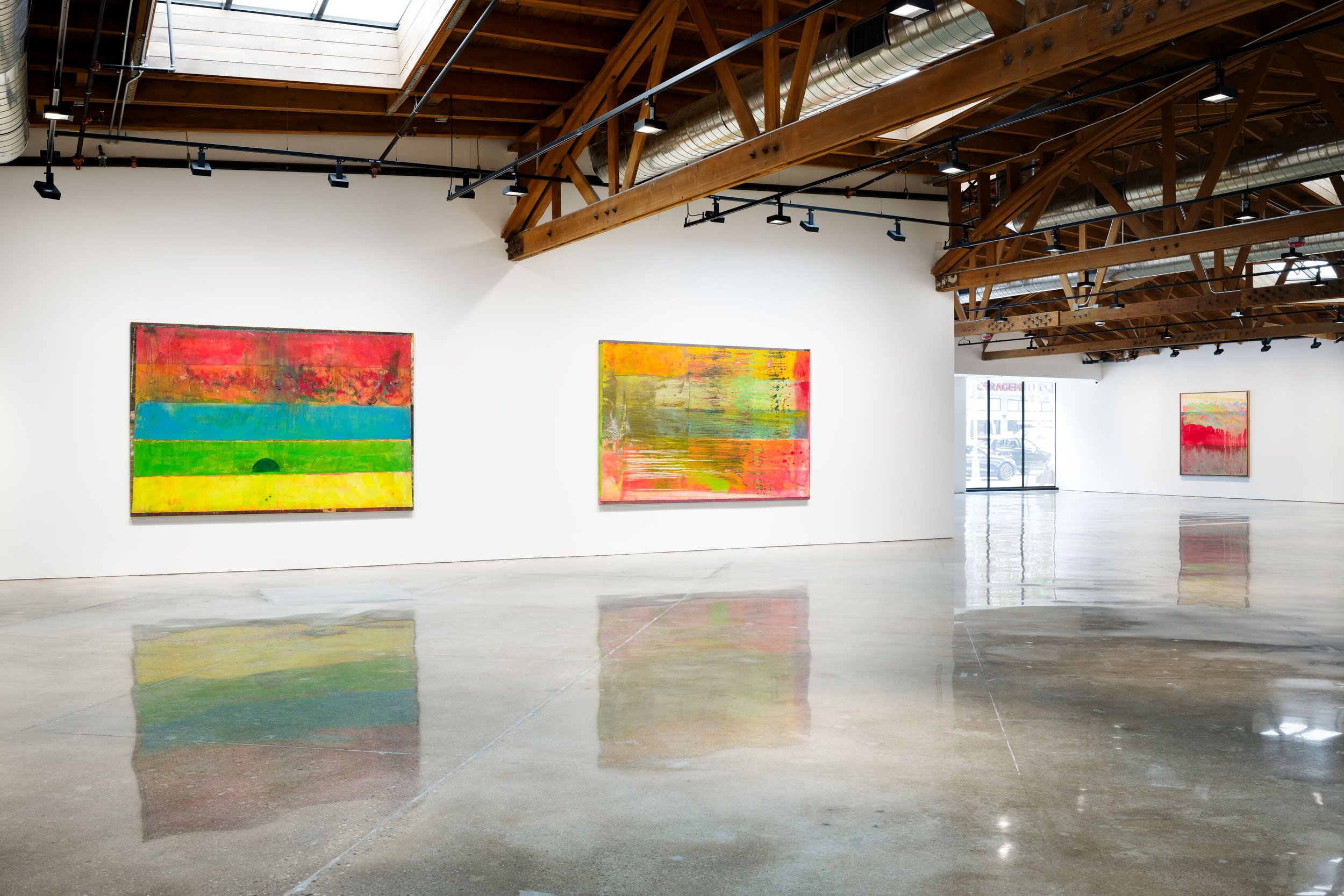
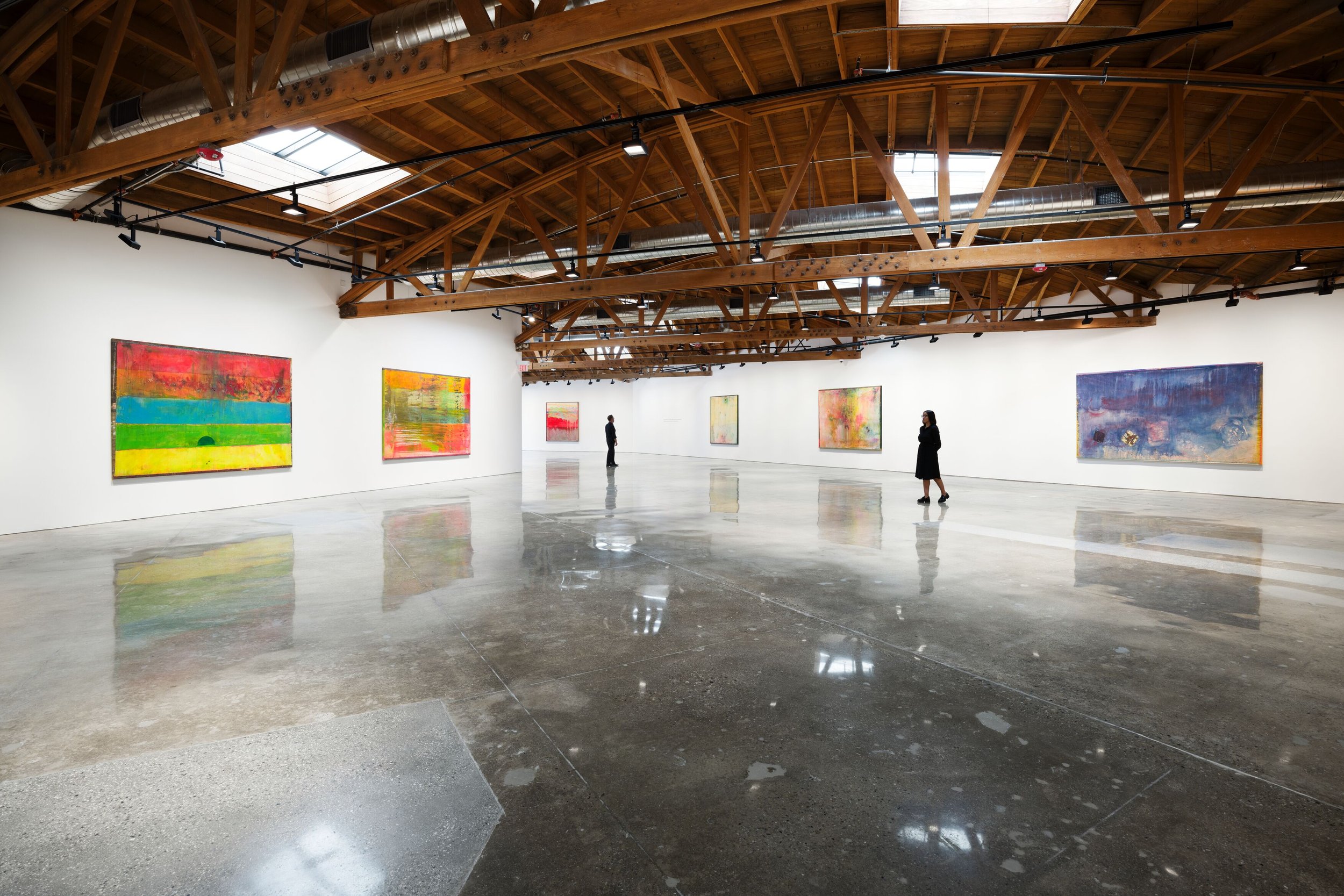
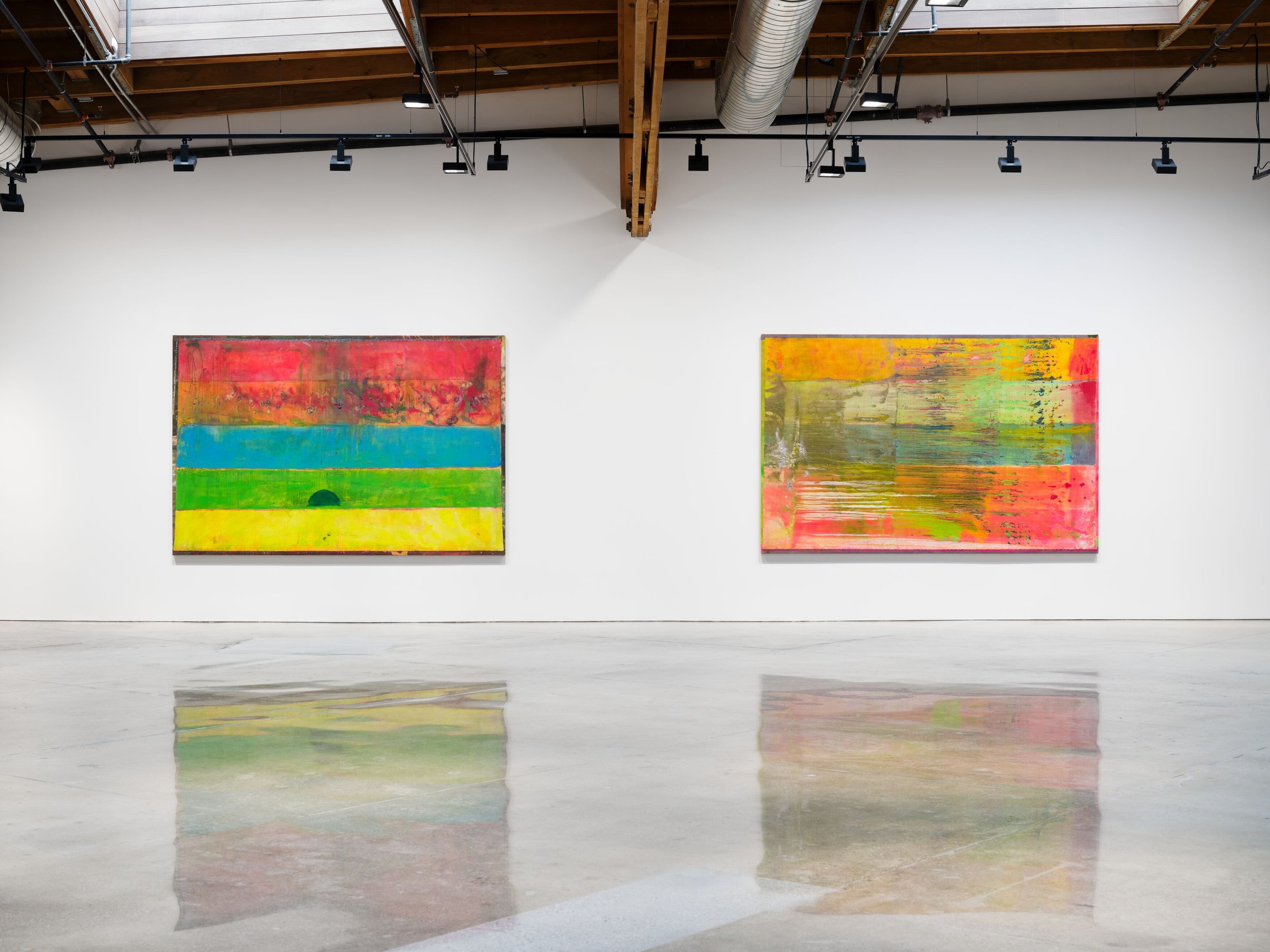
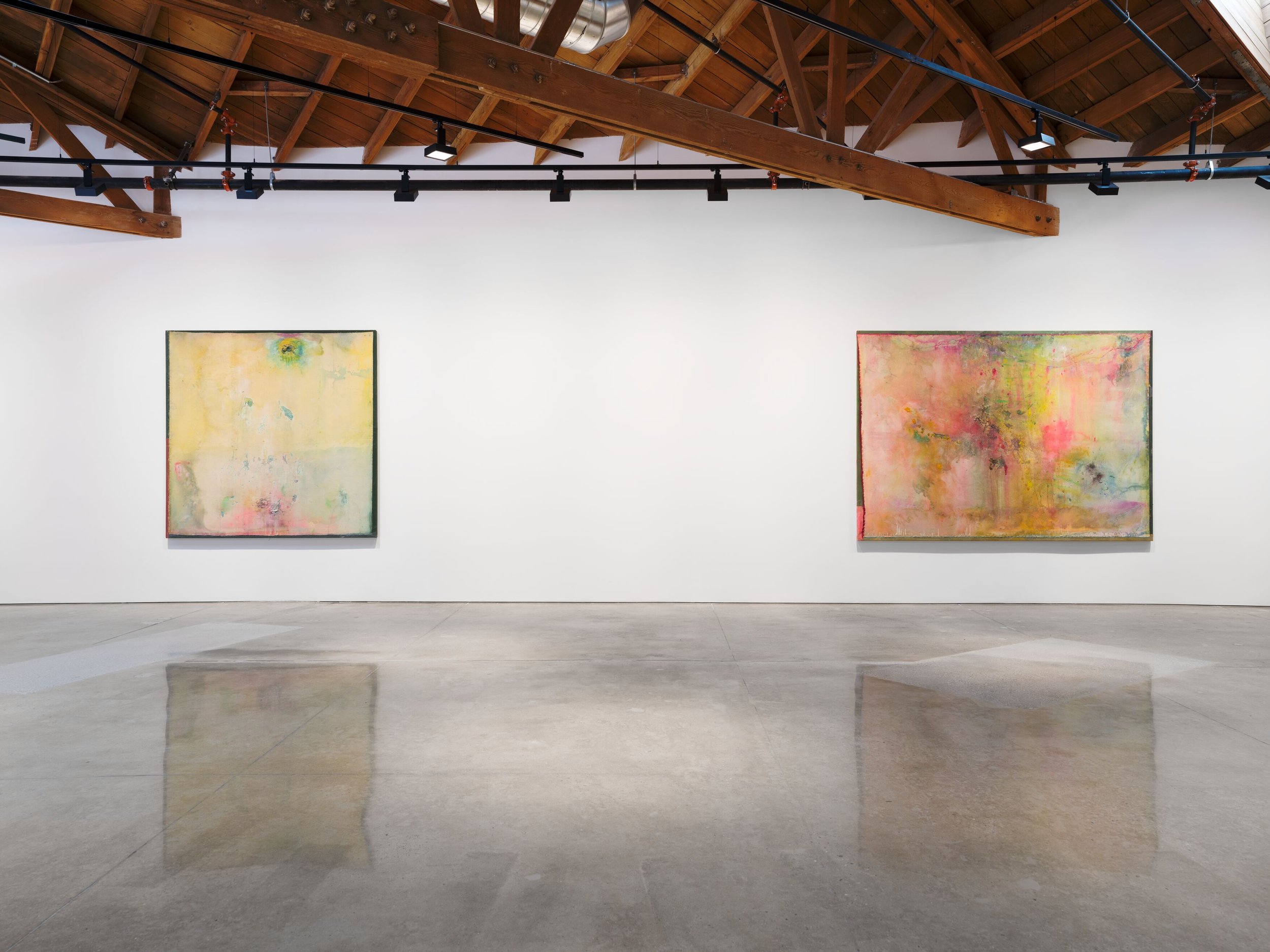
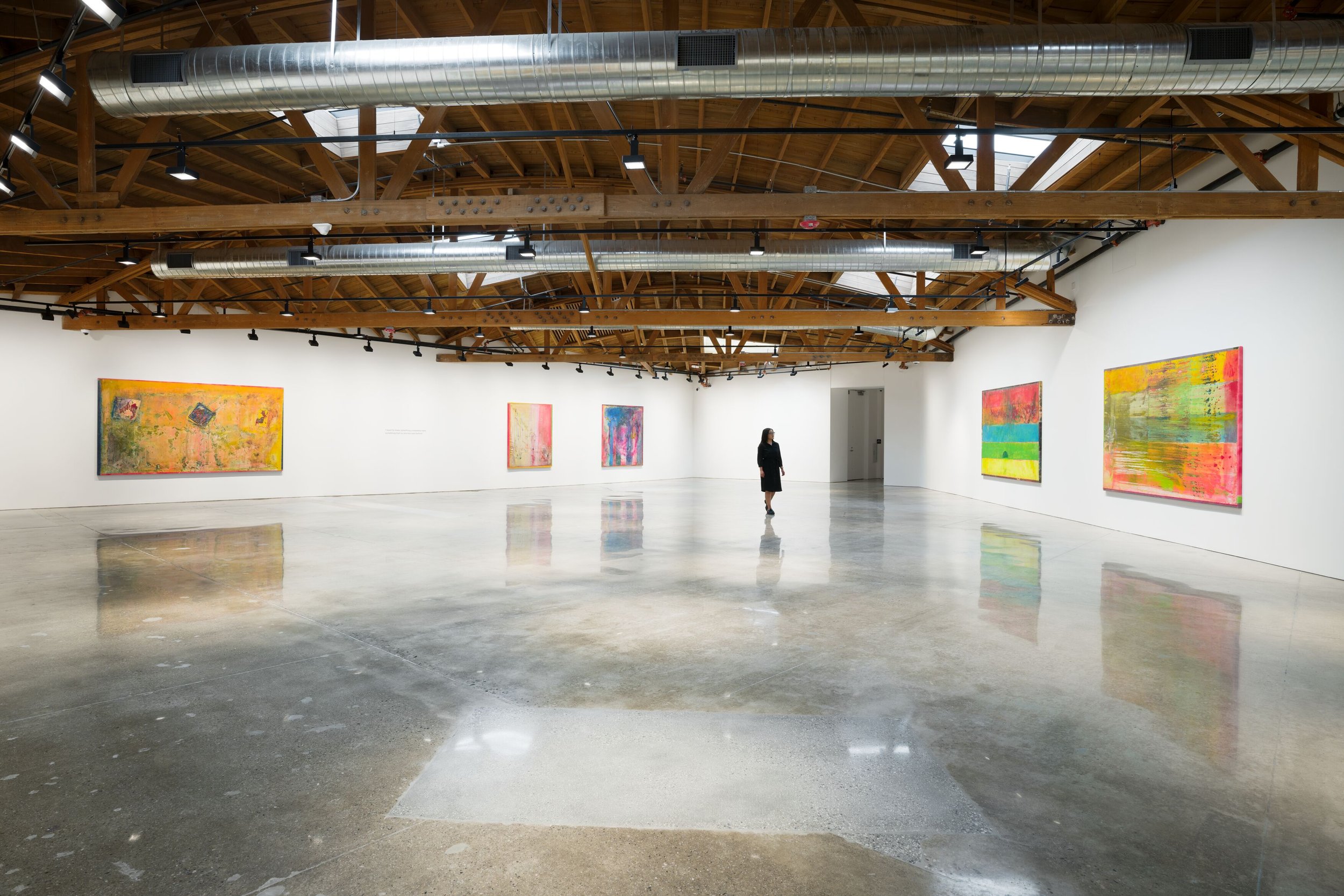
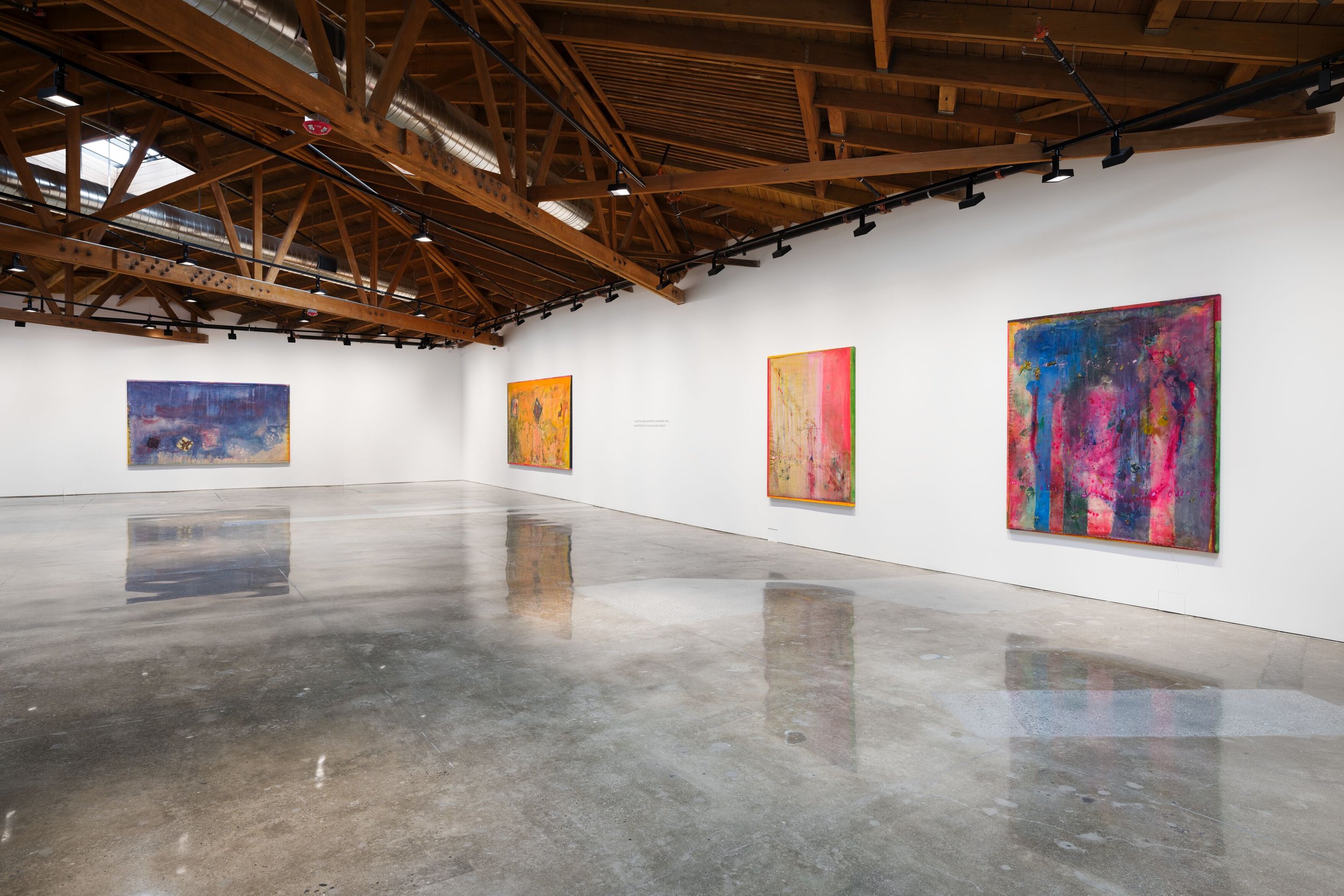

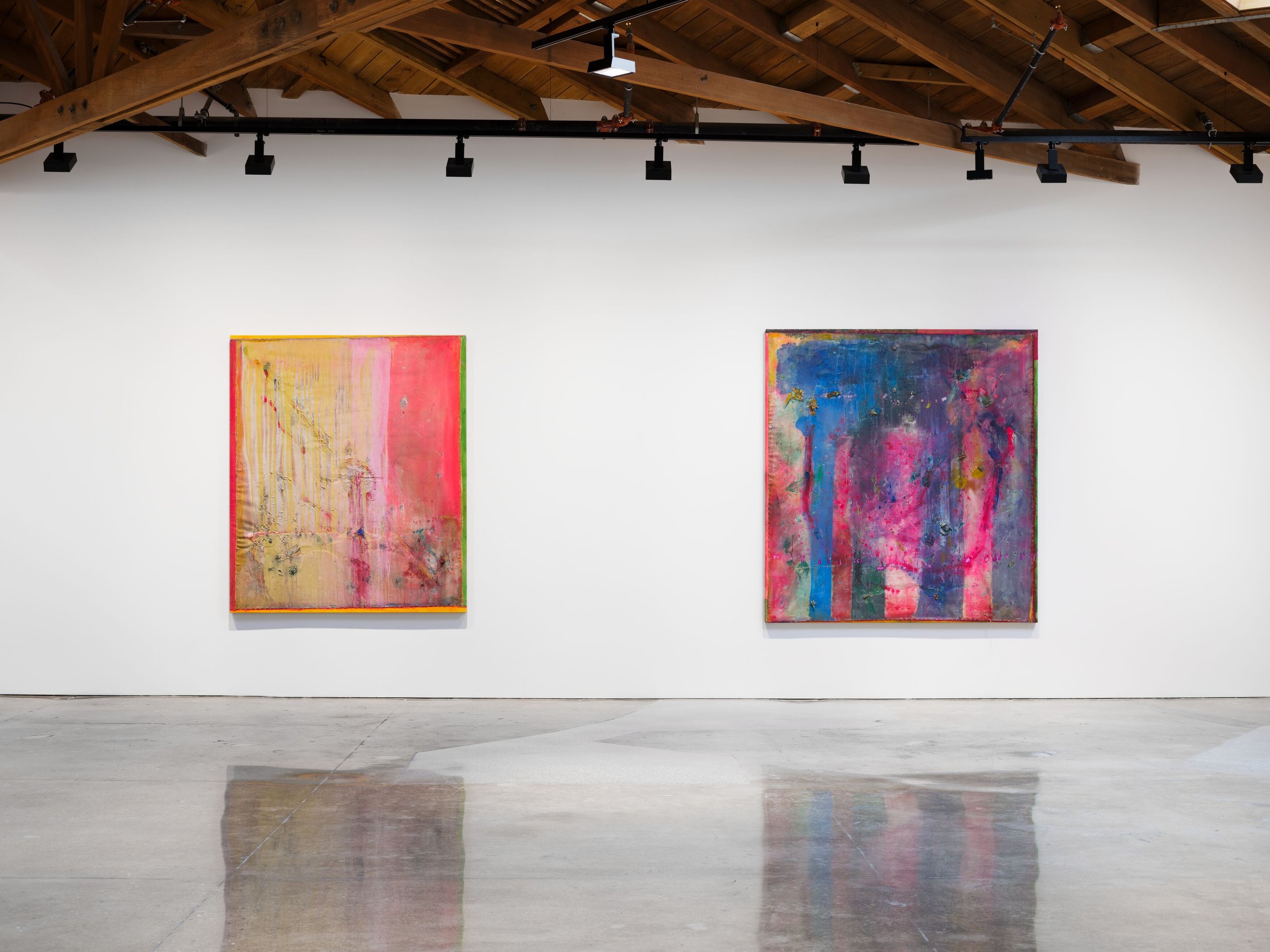
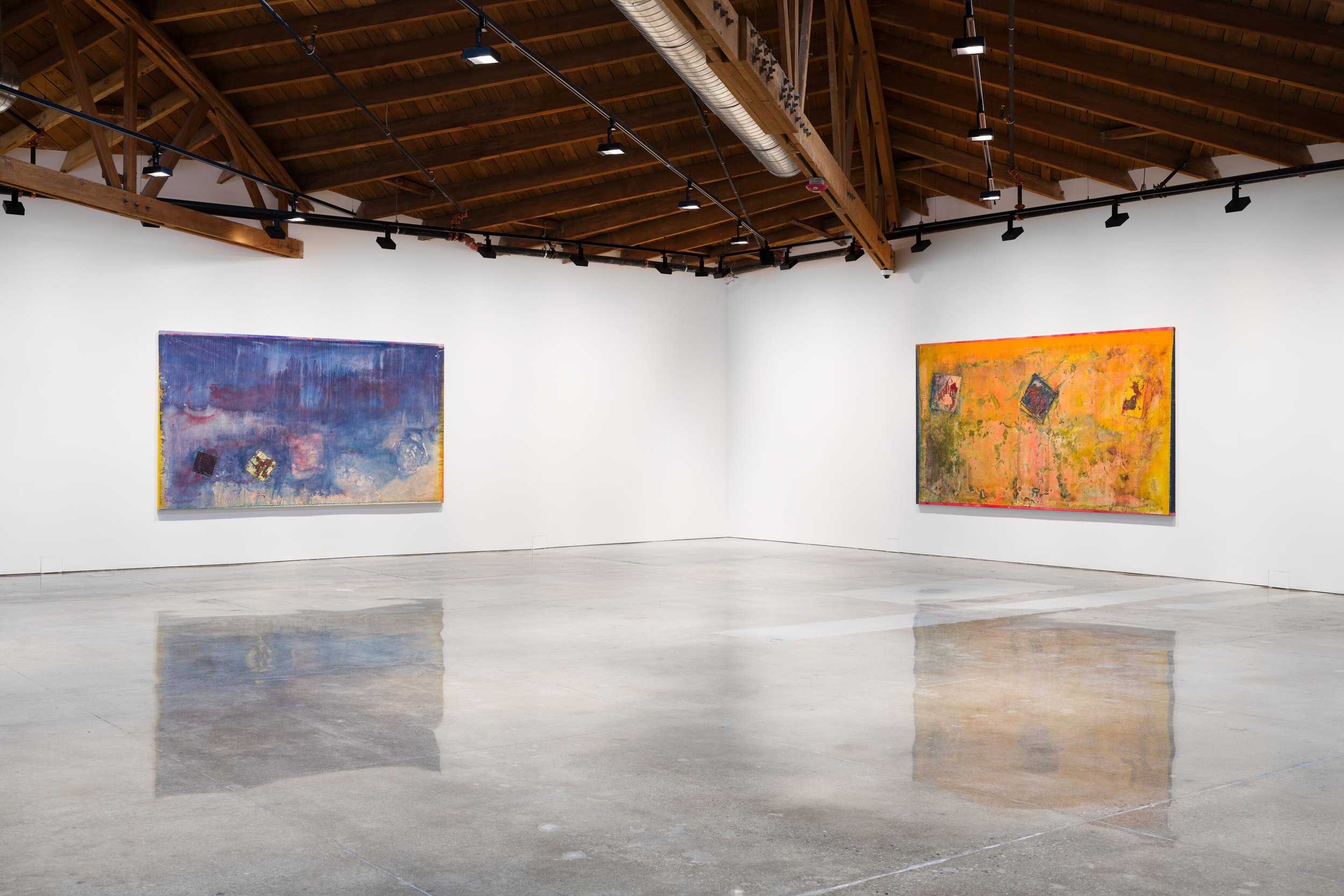
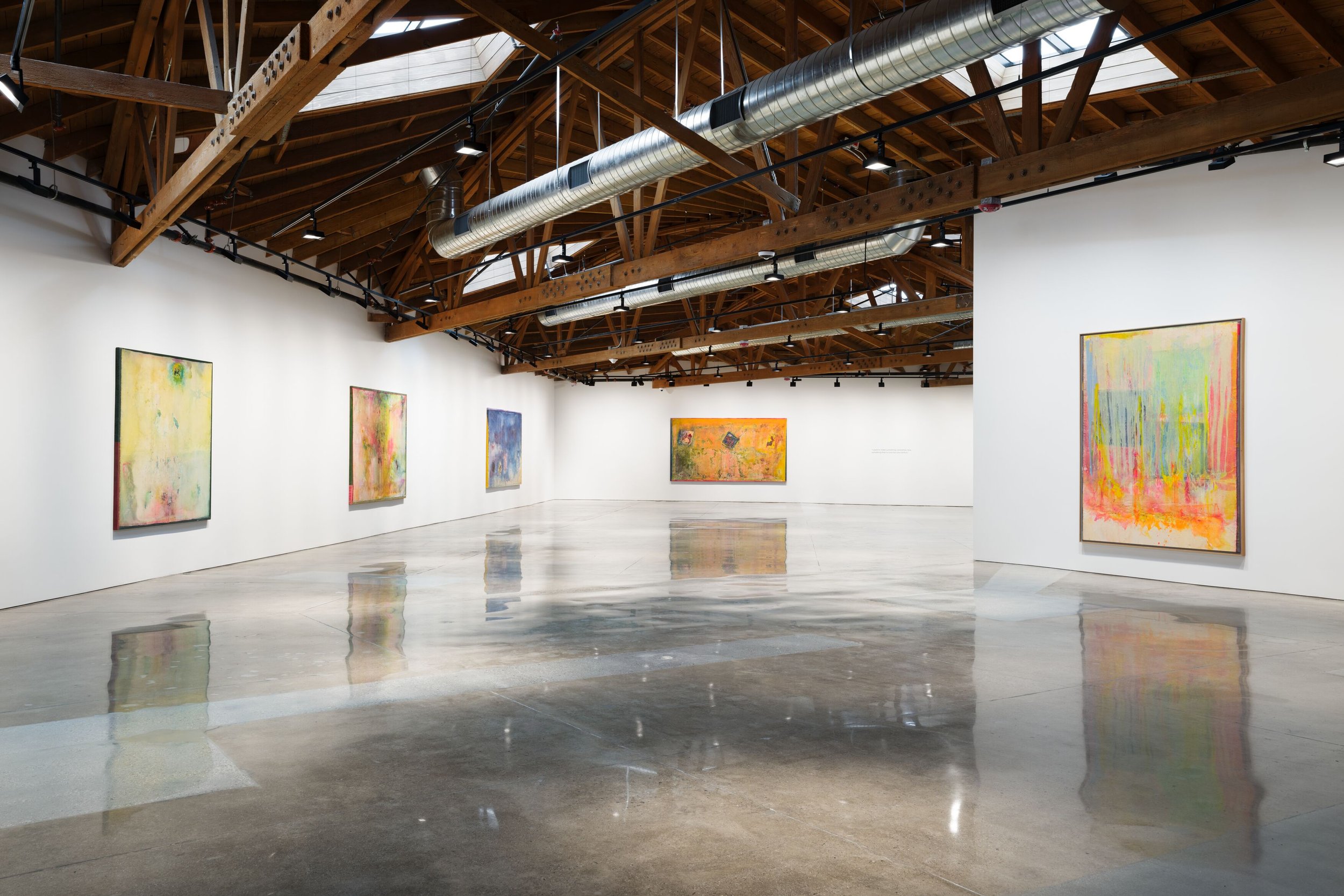
Installation view, ‘Frank Bowling.Landscape,’ Hauser & Wirth West Hollywood 26 May–5 August 2023 ©Frank Bowling All rights reserved, DACS, London / ARS, New York 2023 Courtesy the artist and Hauser & Wirth Photo: Fredrik Nilsen
‘I firmly believe that paint carries its own light within it and I want my paintings to catch the light that exists in the natural world. My whole life I have lived near water – the Berbice river, the Thames, the East River. And I am sure that my eye has been influenced by the light over the water and the terrain in those places, whether that is New Amsterdam or London or New York,’ says Bowling.
On the way too 2021 Acrylic and acrylic gel on canvas with marouflage 188.4 x 285.2 x 5.4 cm / 74 1/8 x 112 1/4 x 2 1/8 in
About the Artist
Sir Frank Bowling OBE RA has been hailed as one of the greatest living painters. Born in British Guiana (now Guyana) in 1934, Bowling arrived in London in 1953, graduating from the Royal College of Art with the silver medal for painting in 1962. By the early 1960s, he was recognized as an original force in London’s art scene with a style combining figurative, symbolic, and abstract elements.
After moving to New York in 1966, Bowling’s commitment to modernism meant he was increasingly focused on material, process, and color so that by 1971 he had abandoned the use of figurative imagery. Bowling’s iconic Map Paintings (1967 – 71), which include the stenciled landmasses of South America, Africa, and Australia, embody his transition to pure abstraction. Bowling exhibited six large Map Paintings in a solo show at the Whitney Museum of Art in 1971. From 1973 to 1978, Bowling experimented with ideas of chance and ‘controlled accidents,’ pouring paint from a two-meter height to create his visually arresting Poured Paintings. His sculptural paintings of the 1980s include embedded objects and thickly textured canvases and have been described as evoking landscape, riverbeds, and geologic strata.
Bowling became a Royal Academician in 2005. He was awarded the OBE for Services to Art in 2008 and a knighthood in the Queen’s Birthday honors in 2020. His work is represented in collections worldwide and has been exhibited in numerous group and solo exhibitions, including the 2017 – 19 touring exhibition ‘Mappa Mundi’ and the hugely successful retrospective at Tate Britain in 2019. Bowling is the subject of a BBC documentary, ‘Frank Bowling’s Abstract World,’ which coincided with the opening of the Tate retrospective. In 2022, he was awarded the Wolfgang Hahn Prize, which honors exceptional contemporary artists.
The exhibit opened on May 26th at Hauser & Wirth’s West Hollywood location and will close on the 5th of August this year.
For more information about the exhibit, please visit Hauser & Wirth site. Also, follow the gallery on Instagram, Facebook, X, and YouTube for more updates on this exhibit. For more updates on this exhibit.
